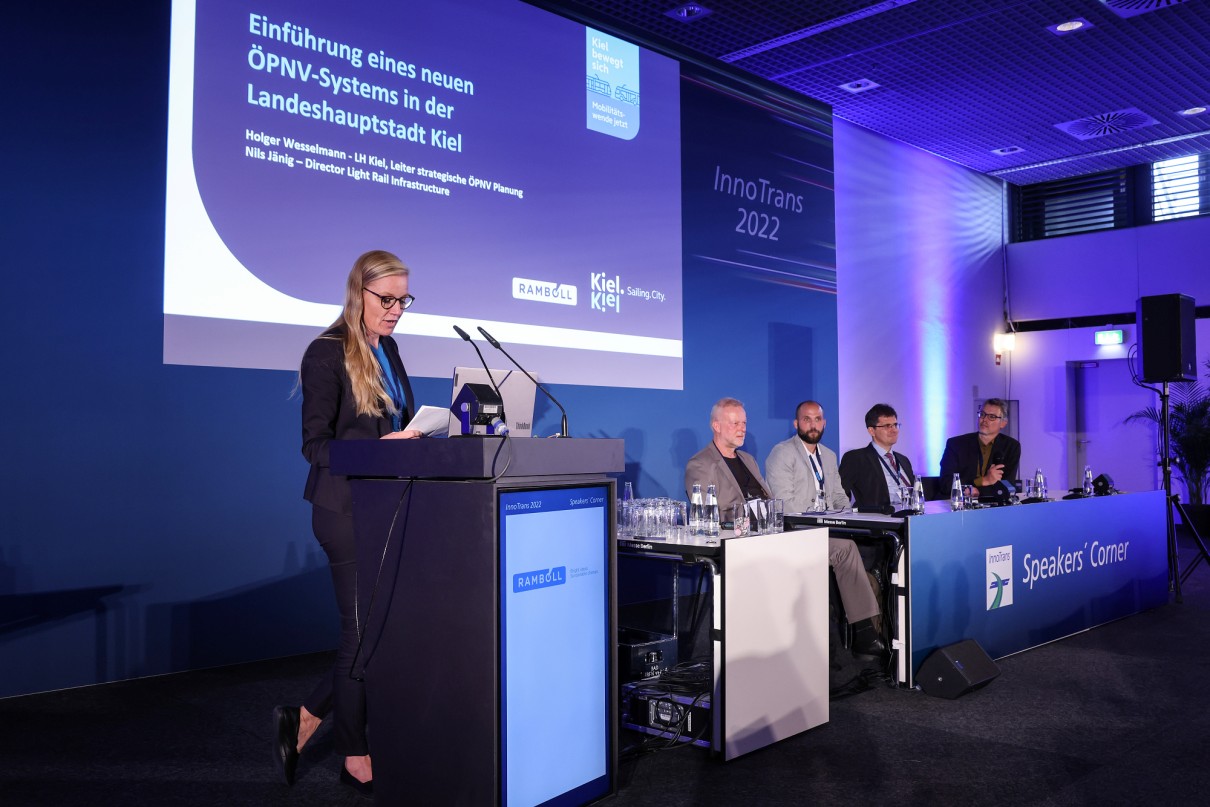Page content
Successful planning for the sustainable transformation of mobility
At the Speakers‘ Corner sessions at InnoTrans 2022, the consulting firm Ramboll initiated an exchange of experiences on the topic of ’Climate neutrality – the sustainable transformation of urban light rail’.
In many German cities trams were taken out of service decades ago. Now they are making a comeback. That was the result of a discussion round at InnoTrans 2022 entitled ’Next stop climate neutrality – the sustainable transformation of urban light rail’, which focused on new urban light rail construction projects according to plans by the international consulting firm Ramboll.
Holger Wesselmann from the Department of Mobility in Kiel, the state capital of Schleswig-Holstein, presented a much-discussed transport project. In order to revitalise the inner city, the authorities are planning a new urban light rail section, parallel with a concept for a corresponding cycle path and a new design for open spaces. “The sustainable transformation of mobility aims to make Kiel even more liveable and help protect the climate“, said Wesselmann.
Ramboll is supporting the project with a study that examines the viability, benefits, costs and economics of the rail project. It also looks at how to overcome complex regional challenges such as circumventing a stretch on the Kieler Förde. “Getting local residents to participate is also very important“, said Holger Wesselmann. In addition to virtual formats a live event has also taken place, as well as walks along the rail section in order to get as many people on board as possible.
The importance of involving local residents has become clear in Baden-Württemberg, where in Tübingen a new urban light rail concept was voted down in a referendum. By contrast, in the neighbouring town of Reutlingen, together with Ramboll work is under way on a new urban light rail concept which also includes bringing disused lines back into service.
In Regensburg too, trams have not been running since 1964. In 2018, together with the city, Ramboll completed a study which also took features such as the medieval city centre, the geographical location on the Danube as well as a lack of bridges into account. “The decision to approve the urban light rail concept was down to the higher passenger volumes of rail versus bus transport“, said Frank Steinwede, head of Public Transport Planning at Stadtwerk Regensburg Mobilität GmbH.
Mobility expert, influencer and author Katja Diehl agrees that “there is a mood of change.“ In her view, there are various aspects to the sustainable transformation of mobility. Even though it was still taboo, things could only change if the privileges that cars had were removed. It was worth taking a look at other European cities, where in some cases more progress had been made than in Germany, she said. She has found positive examples in large cities such as Barcelona, but also smaller ones, in the Baltic States for instance. What was needed however was a strong political will to make cities car-free and liveable, she said.
A video of the event is available on demand at InnoTrans Plus.
Title: ‘Ramboll - next stop climate neutrality – the sustainable transformation of urban light rail’

Photo: Messe Berlin GmbH

